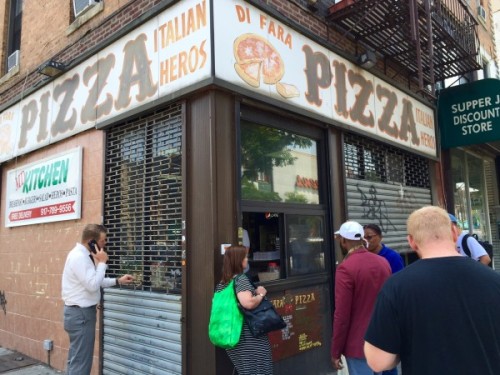Di Fara Pizza is a small, single-location pizza place in Brooklyn. According to its Wikipedia entry (yes, it has a Wikipedia entry), it has been named to many, many lists of the best pizza in New York City. The place’s secret sauce is Dom DeMarco, the shop’s owner, who essentially makes every pie. He opened the shop in 1964 and is now 79. He doesn’t work too fast and really does everything right down to slicing basil on to each slice. Consequently, the lines can be a tad long. It is one of the principle things that on-line reviewers comment on:
It’s nice to see that the original pizza making man still has the passion to make pizza. But the wait is ridiculously long and people in there are just too pushy. “Next! What do you want?”
So how does that kind of wait affect their business and the customer experience? That was the topic of discussion of a recent episode of The Gist podcast (Your Food Will Be Ready When You Look Hungry Enough, Oct 12).
The guest of that episode is Dan Pashman, who describes his visit to Di Fara as well as the research he did to put together an episode of his own podcast, The Sporkful (Is This Pizza Worth Waiting For?, Aug 11).
Some of that reporting also ended up in an episode of Freakonomics Radio (What Are You Waiting For?, Aug 10)
That’s right: The man made one trip to Brooklyn and it resulted in three podcast episodes.
The Sporkful and Freakonomics episodes are worth a listening. Both talk about different aspects of managing queues. The former emphasizes more psychology and physiology (especially how waiting affects hunger) while the latter puts more emphasis on the economics of queue. (more…)


